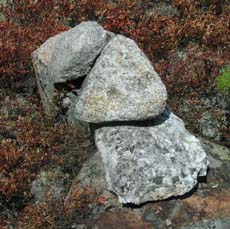index
Our native spaciousness
click on images for full-size:



Rocks occupying their location (Maine)

People occupying their place (Hong Kong)
We are not in a place the way a tree or a rock is in a location. We are in a place as the motion of the sustaining and the repetition (and so the re-making) of the appropriate actions and the grammar of the place. Since our being in a place is a spread-out process, it has its own spaciousness. That spaciousness may feel like a condition of exile. It is true we will never have a firm and final home, but it is equally true that we are not floating disconnected from any historical identities and places.All inhabitation involves a spaciousness that is part of what it means to exist in time. Our places are temporally and spatially porous and penetrated by references and links. While no set of local meanings can close totally around us, there are many ways to make it appear that this is the case, and we can be enlisted in efforts to hold the horizon closed. [Objection!]